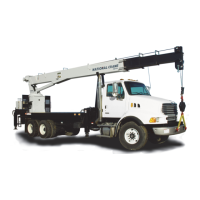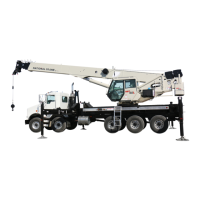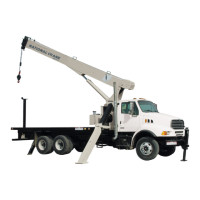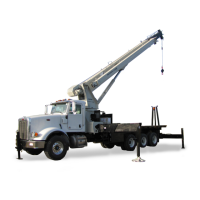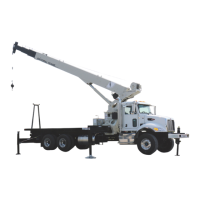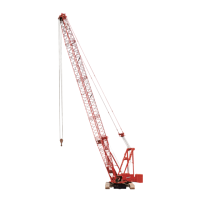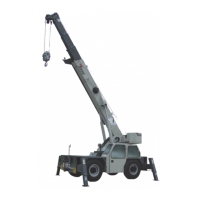NATIONAL CRANE Published 9-26-2018 Control # 646-02 6-3
NTC55 OPERATOR MANUAL MAINTENANCE CHECKLIST
7. Cylinders for:
a. Damaged rods
b. Dented barrels
c. Drift from oil leaking by piston
d. Leaks at rod seals, welds, or holding valves.
8. PTO drive line system for proper alignment, lubrication
and tightness.
9. Hydraulic hose and tubing for evidence of damage such
as blistering, crushing, or abrasion.
10. Top and bottom wear pads for excessive wear.
11. Inspect all electrical wires and connections for worn, cut
or deteriorated insulation and bare wire. Replace or
repair wires as required.
12. Extend and retract cables, sheaves, pins, and bearings
for wear or abrasion.
13. Main frame and stabilizer mount bolts for proper torque
(see Torque Chart).
14. Rotation bearing and gearbox mounting bolts for proper
torque (see Torque Chart).
15. Missing or unreadable warning labels.
16. Missing or unusable/unsafe condition of steps, ladders,
handrails, guards or seat.
Special Boom Inspection
If the boom has not been disassembled and inspected in the
last five years or 3,000 hours of use, the boom is to be
completely torn down to allow a thorough inspection of the
extend and retract cables, sheaves, and pins.
Stability
Stability of unit throughout working area. Check the stability
procedure in Installation Section of the Service Manual
annually or when any changes are made to crane or truck.
HOIST CABLE INSPECTION AND
MAINTENANCE
Hoist rope should be inspected frequently/daily and
periodically/yearly in accordance with the following
information excerpted from a National Consensus Standard
as referenced by Federal Government Agencies.
Recommended inspection intervals may vary from machine
to machine and may vary based on environmental
conditions, frequency of lifts, and exposure to shock loads.
The inspection time intervals may also be predetermined by
state and local regulatory agencies.
NOTE: Hoist rope may be purchased through Manitowoc
Crane Care.
Any deterioration observed in the wire rope should be noted
in the equipment inspection log and an assessment
concerning wire rope replacement should be made by a
qualified person.
Keeping Records
A signed and dated report of the rope’s condition at each
periodic inspection must be kept on file at all times. The
report must cover all inspection points listed in this section.
The information in the records can then be used to establish
data which can be used to determine when a rope should be
replaced.
It is recommended that the rope inspection program include
reports on the examination of rope removed from service.
This information can be used to establish a relationship
between visual inspection and the rope’s actual internal
condition at the time of removal from service.
Environmental Conditions
The life expectancy of rope may vary due to the degree of
environmental hostility and other conditions to which these
mechanical devices are subjected. Variation in temperature,
continuous excessive moisture levels, exposure to corrosive
chemicals or vapors or subjecting the rope to abrasive
material may shorten normal rope life. Frequent/periodic
inspections and maintenance of rope is recommended for
preventing premature wear and to insure long-term
satisfactory performance.
NOTE: Refer to Wire Rope Lubrication, page 5-9 for wire
rope lubrication requirements.
Dynamic Shock Loads
Subjecting rope to abnormal loads beyond the endurance
limit will shorten the rope life expectancy. Examples of this
type of loading are listed below.
• High velocity movement, for example; hoisting or
swinging of a load followed by abrupt stops.
• Suspending loads while traveling over irregular surfaces
such as railroad tracks, potholes, and rough terrain.
• Lifting a load that is beyond the rated capacity of the
lifting mechanism, such as overloading.
WARNING
Worn or Damaged Equipment Hazard!
Never use a worn or damaged rope. Death or serious
injury could result from using worn or damaged rope.

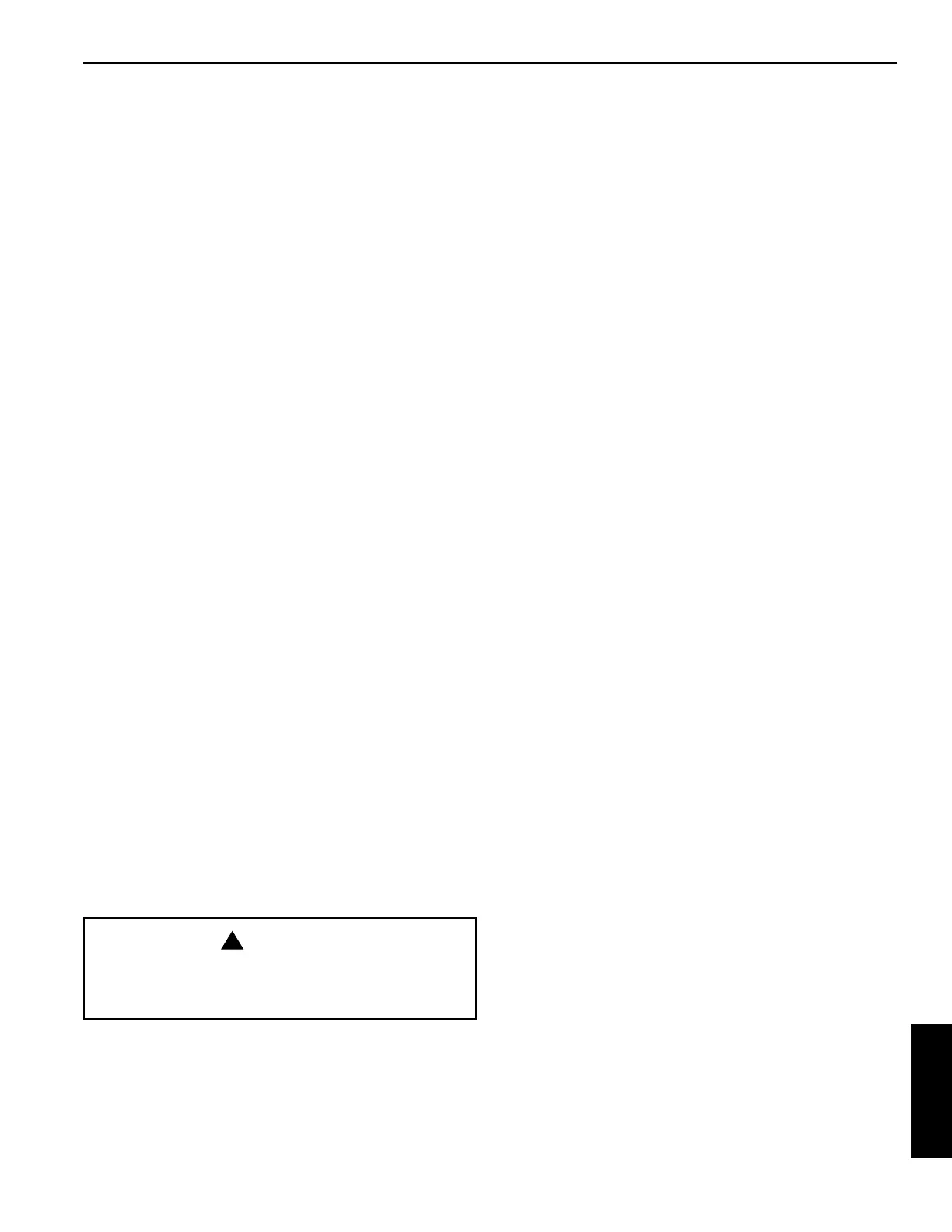